Winter Sleigh Ride c.1960s
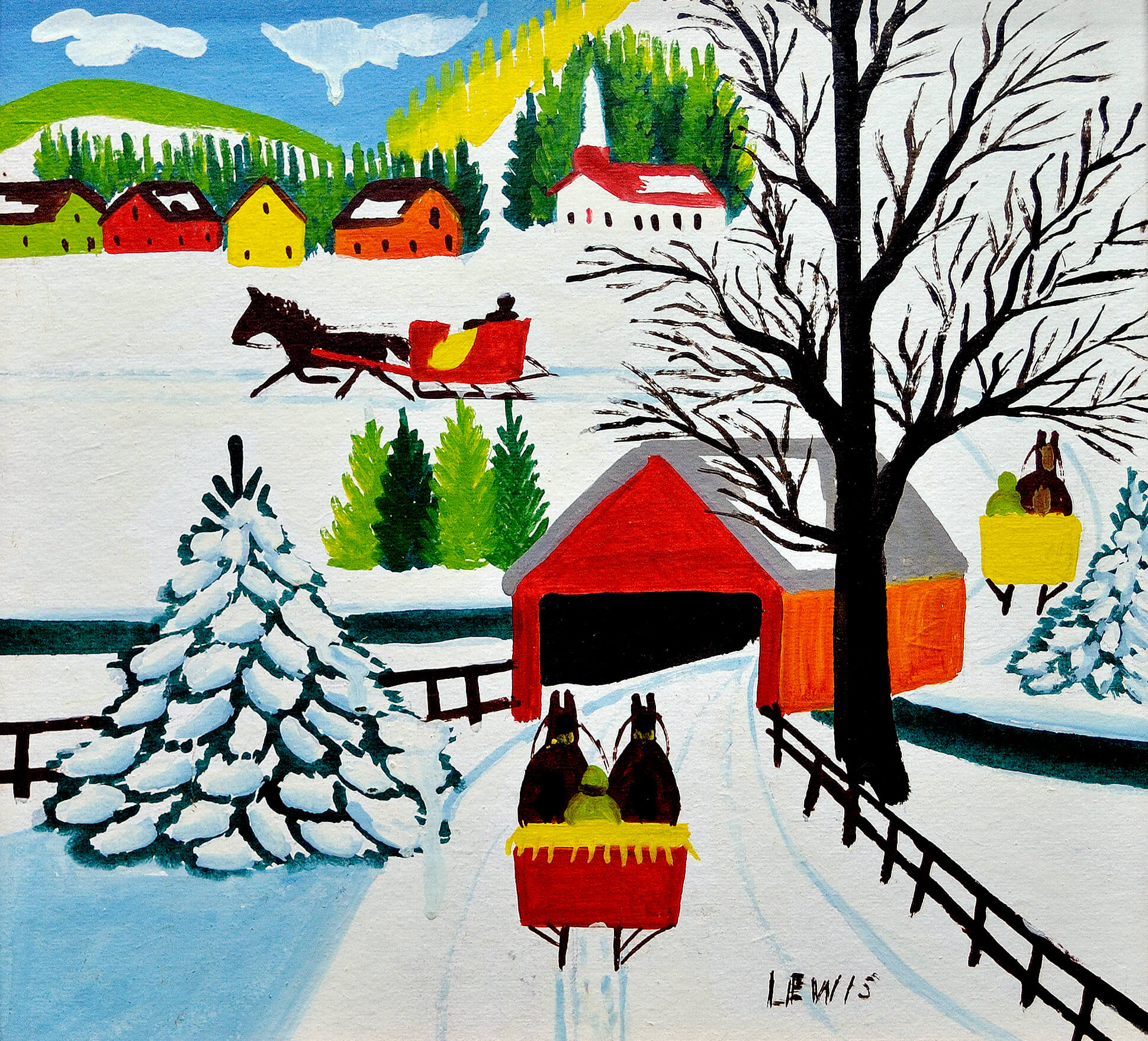
Maud Lewis, Winter Sleigh Ride, c.1960s
Oil on pulpboard, 33.0 x 35.5 cm
Art Gallery of Nova Scotia, Halifax
This work depicts a sleighing party, with three horse-drawn sleighs navigating a wintry valley. When the Art Gallery of Nova Scotia mounted the nationally touring exhibition The Illuminated Life of Maud Lewis in 1997, Winter Sleigh Ride was displayed in a grouping of six similar works to highlight the serial nature of Maud Lewis’s painting practice. “It is probably more useful to think of repeated images in folk art in terms of seriality than as commercial opportunism,” wrote Harold Pearse of the exhibition, arguing that repeated imagery had more to do with the lives of the artists than with purely commercial concerns. That conjunction is very apparent here: Winter Sleigh Ride combines the commercial aspects of Lewis’s practice, which, after all, was rooted in the making of Christmas cards, with the nostalgia (for simpler pre-industrial times, certainly, but more poignantly, for the simpler and secure childhood of her own memories) that is ever-present in her work.
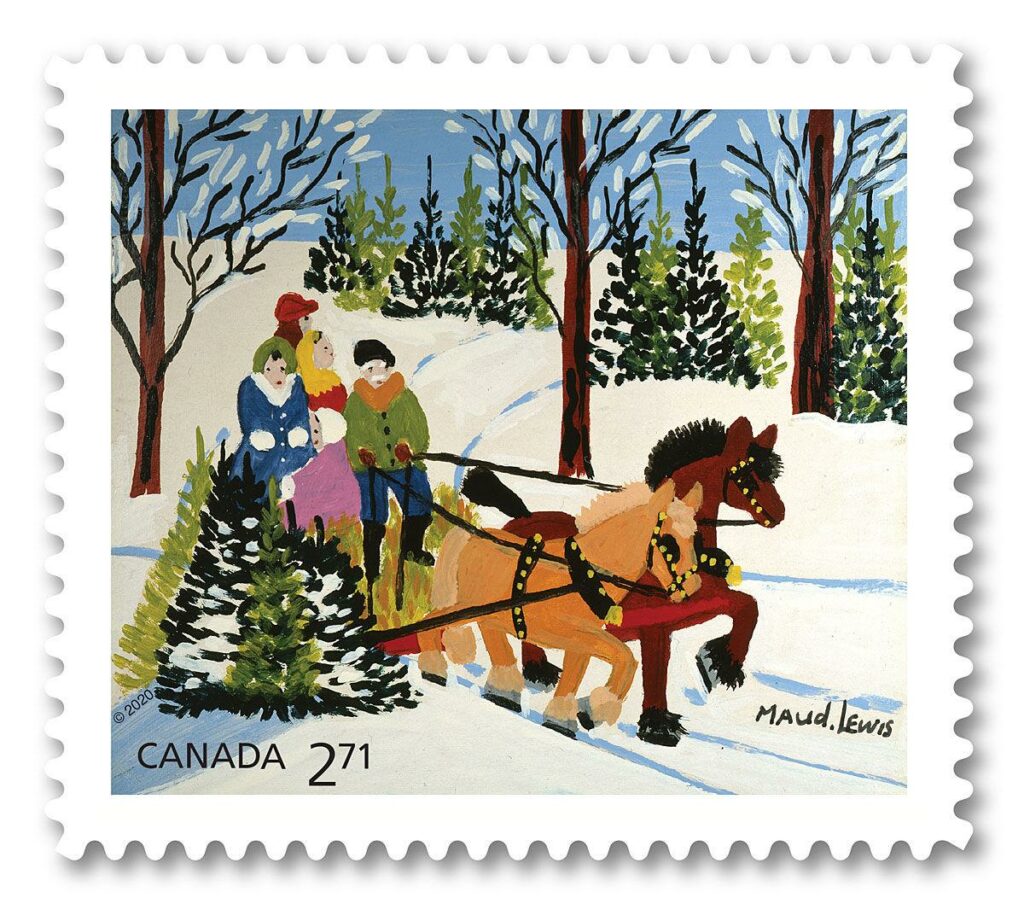
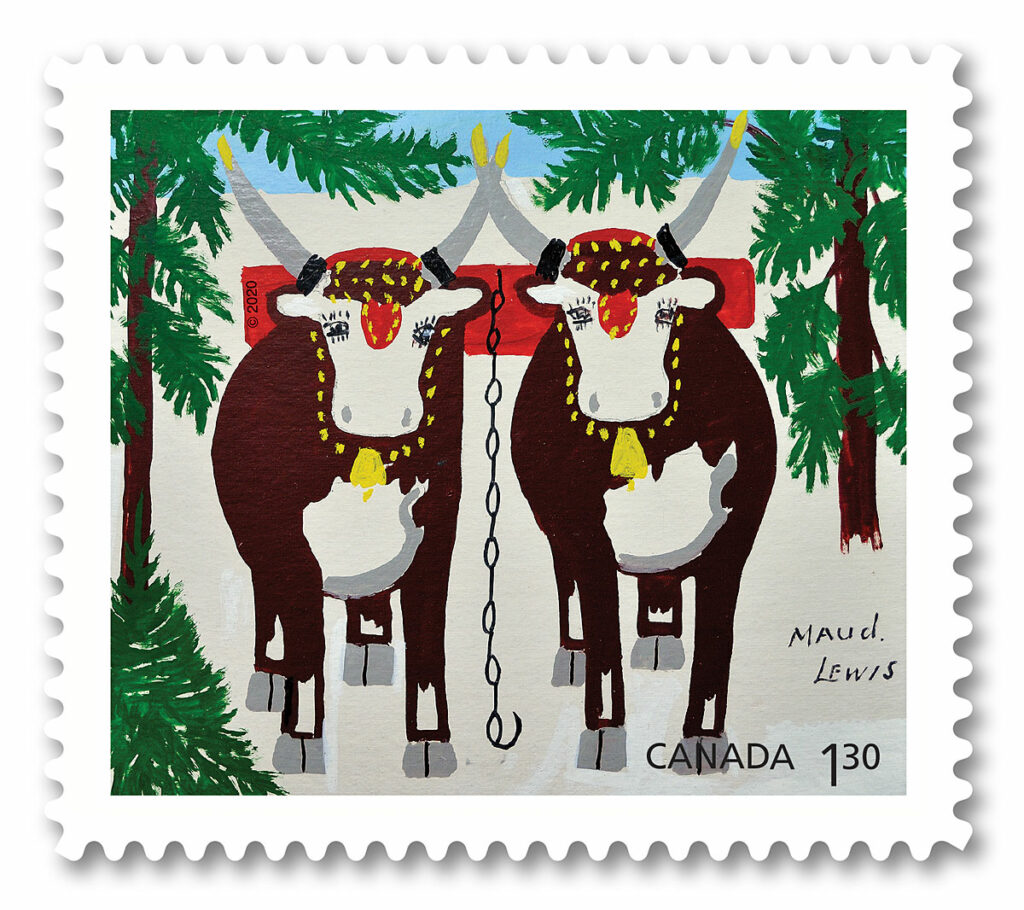
The viewpoint in the painting is somewhat high, as if the viewer too were riding in a sleigh coming down the slope into the valley. The foreground features a sleigh and a snow-covered evergreen, which casts a blue shadow toward the lower left corner of the picture. The middle ground is occupied by a red covered bridge. The road curves broadly to the left, with two sleighs further along the track on the other side of the bridge. In the background is a small village, anchored by Lewis’s familiar red-roofed white clapboard church, and four brightly coloured houses or barns (green, red, yellow, and ochre). The village sits at the base of a line of hills, effectively enclosing the scene rather than suggesting infinite space. Despite the three clearly defined zones in the painting, like almost all of Lewis’s work it remains quite flat, an approach to composition that Pearse, among other critics, has described as “medieval-like.”
Like so much of her work, this image has been widely reproduced. In 2020 it was one of three Lewis paintings featured on Canadian postage stamps, a set that included one for domestic mail (featuring this painting), one for U.S. mail (depicting a pair of oxen), and one for international mail (showing Family and Sled, c.1960s).

 About the Author
About the Author
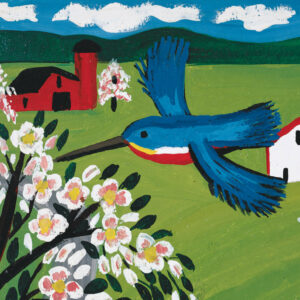 More Online Art Books
More Online Art Books
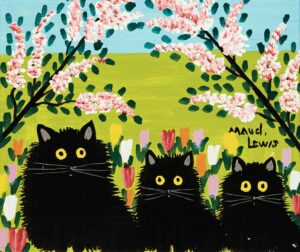 Acknowledgements
Acknowledgements